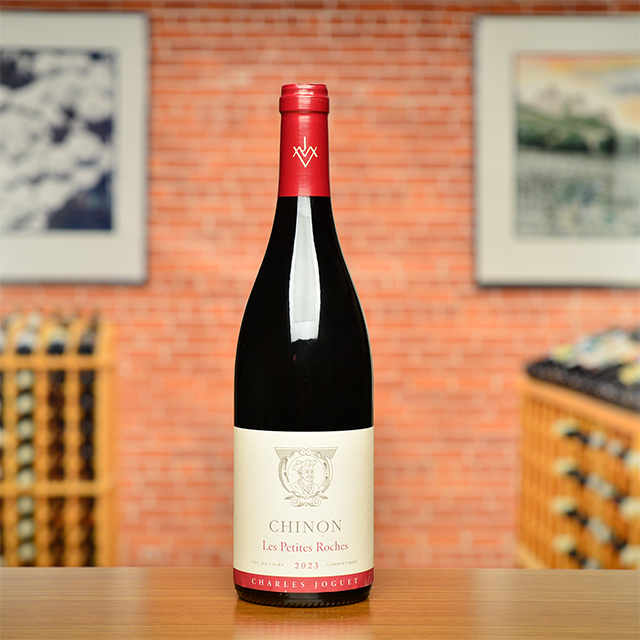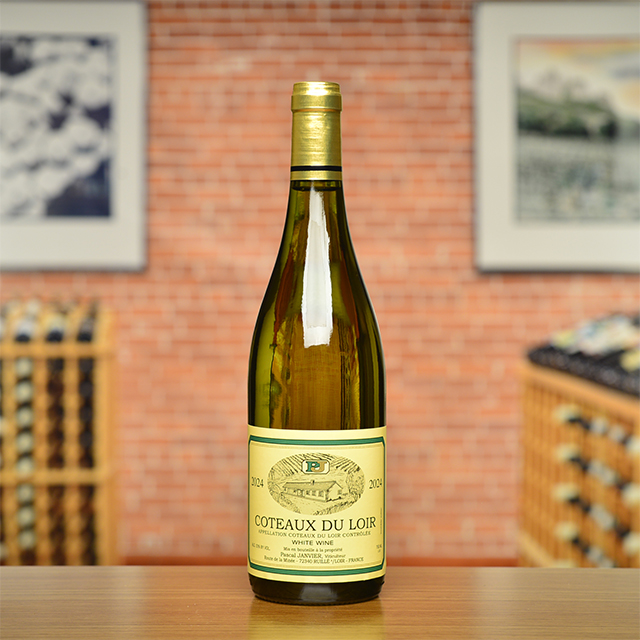Notify me
2021 Anjou Rouge “Clos de la Cerisaie”
Château d’Épiré
Château d’Epiré is a true guardian of Savennières history: for centuries, the property has been the source of profound, age-worthy Chenin Blanc that evokes the local schist soils with utter transparency. But the Anjou region is also Cabernet Franc territory, and as we well know, after every great white a great red must follow. It is only natural, then, that the Bizard family—who has owned Epiré since the 17th century—should make a bit of rouge, too.
Cabernet Franc in this terroir shares certain traits with white Savennières, as one might expect. It is a lively, brisk wine, showcasing pristine red fruit and a hint of herbs over a firm foundation of stony acidity. Unfined and unfiltered, the 2021 satisfies with a velvety fullness and mouth-watering finish.
—Anthony Lynch
| Wine Type: | red |
| Vintage: | 2021 |
| Bottle Size: | 750mL |
| Blend: | Cabernet Franc |
| Appellation: | Savennières |
| Country: | France |
| Region: | Loire |
| Producer: | Château d’Épiré |
| Winemaker: | Luc Bizard |
| Vineyard: | Planted in 1973, 1976, 2016, 1.5 ha |
| Soil: | Schist |
| Aging: | Wine ages in 30 hectoliter stainless steel tanks until spring |
| Farming: | Lutte Raisonnée |
| Alcohol: | 13% |
More from this Producer or Region

Vouvray Brut
France | Loire
Made from Chenin Blanc in the Champagne method, this cuvée is the quintessential apéritif sparkling wine, with notes of apple and pear and a fine bead.

2021 Chinon “Le Clos Guillot”
France | Loire
Even though all of the wines hail from Chinon, the soil, elevation, and exposition all combine to make Le Clos Guillot their cuvée with the most finesse.

2024 Bourgueil Rosé
France | Loire
Pretty and elegant, with a taste of fresh peaches and nectarines, it is perfect for your summer table.

2024 Savennières “Cuvée Spéciale”
France | Loire
Powerful, cellar-worthy dry Chenin aged in chestnut, oak, and acacia.

2024 Jasnières
France | Loire
Racy, slightly honeyed, exotically perfumed, and loaded with minerality, this wine is an excellent representation of how Chenin reacts to the local conditions.

2020 Saumur Champigny “Clos de l’Échelier”
France | Loire
Fine, with bright acid, sleek silkiness, and great length, it is the most elegant of all of Thierry’s red wines.

2023 Savennières
France | Loire
Savennières is home to some of the greatest terroirs for this grape variety thanks to its soils of schist, sandstone, and blue slate and its proximity to the moderating Loire River.

2023 Chinon “Les Petites Roches”
France | Loire
Showing off Cabernet in its most delicate, charming form, rife with aromas of roses, damp earth, and little red berries.

2024 Coteaux du Loir Blanc
France | Loire
Exotically perfumed with hints of guava, musk, and clove, it finishes dry and quite flinty.

2024 Cheverny
France | Loire
Sauvignon and a splash of Chardonnay: the epitome of minerally Loire refreshment
About The Producer
Château d’Épiré
One of the oldest and most celebrated domaines in Savennières, Chateau d’Épiré is rich in history. Savennières is situated just southwest of Angers, on the north bank of the Loire River. Vines have been cultivated there since the time of the Romans. The domaine itself has been in the Bizard family continuously since the 17th century. The most recent owners and caretakers of the land are Monsieur and Madame Luc Bizard. They own eleven hectares, nine of which are entirely dedicated to the cultivation of Pineau de la Loire, known today as Chenin Blanc. The château is exquisite, but the pièce de résistance is their winery, formerly a Romanesque chapel, which is from the 12th century. Truly a blessed wine!
About The Region
Loire

The defining feature of the Loire Valley, not surprisingly, is the Loire River. As the longest river in France, spanning more than 600 miles, this river connects seemingly disparate wine regions. Why else would Sancerre, with its Kimmeridgian limestone terroir be connected to Muscadet, an appellation that is 250 miles away?
Secondary in relevance to the historical, climatic, environmental, and cultural importance of the river are the wines and châteaux of the Jardin de la France. The kings and nobility of France built many hundreds of châteaux in the Loire but wine preceded the arrival of the noblesse and has since out-lived them as well.
Diversity abounds in the Loire. The aforementioned Kimmeridgian limestone of Sancerre is also found in Chablis. Chinon, Bourgueil, and Saumur boast the presence of tuffeau, a type of limestone unique to the Loire that has a yellowish tinge and a chalky texture. Savennières has schist, while Muscadet has volcanic, granite, and serpentinite based soils. In addition to geologic diversity, many, grape varieties are grown there too: Cabernet Franc, Chenin Blanc, Sauvignon Blanc, and Melon de Bourgogne are most prevalent, but (to name a few) Pinot Gris, Grolleau, Pinot Noir, Pineau d’Aunis, and Folle Blanche are also planted. These myriad of viticultural influences leads to the high quality production of every type of wine: red, white, rosé, sparkling, and dessert.
Like the Rhône and Provence, some of Kermit’s first imports came from the Loire, most notably the wines of Charles Joguet and Château d’Epiré—two producers who are featured in Kermit’s book Adventures on the Wine Route and with whom we still work today.
More from Loire or France
2023 Sancerre “Les Coutones”
Daniel Chotard France | Loire
2021 Saumur Champigny “La Marginale”
Thierry Germain France | Loire
2020 Saumur Champigny “Clos de l’Échelier”
Thierry Germain France | Loire
2024 Val de Loire Sauvignon Blanc “Unique”
Domaine du Salvard France | Loire
2022 Chinon “Cuvée Terroir”
Charles Joguet France | Loire
2024 Menetou-Salon Blanc “Le Prieuré”
Prieuré de Saint Céols France | Loire
2020 Chinon “Les Varennes du Grand Clos”
Charles Joguet France | Loire
2020 Saumur-Champigny “Franc de Pied”
Thierry Germain France | Loire
2023 Savennières
Château d’Epiré France | Loire
2023 Bourgueil “Cuvée Alouettes”
Domaine de la Chanteleuserie France | Loire
2024 Jasnières
Pascal Janvier France | Loire
2023 Sancerre “Les Cris”
Daniel Chotard France | Loire
2023 Sancerre “Les Coutones”
Daniel Chotard France | Loire
2021 Saumur Champigny “La Marginale”
Thierry Germain France | Loire
2020 Saumur Champigny “Clos de l’Échelier”
Thierry Germain France | Loire
2024 Val de Loire Sauvignon Blanc “Unique”
Domaine du Salvard France | Loire
2022 Chinon “Cuvée Terroir”
Charles Joguet France | Loire
2024 Menetou-Salon Blanc “Le Prieuré”
Prieuré de Saint Céols France | Loire
2020 Chinon “Les Varennes du Grand Clos”
Charles Joguet France | Loire
2020 Saumur-Champigny “Franc de Pied”
Thierry Germain France | Loire
2023 Savennières
Château d’Epiré France | Loire
2023 Bourgueil “Cuvée Alouettes”
Domaine de la Chanteleuserie France | Loire
2024 Jasnières
Pascal Janvier France | Loire
2023 Sancerre “Les Cris”
Daniel Chotard France | Loire
Kermit once said...

Kermit once said...
You don’t have to be rich to cellar a great wine.


















